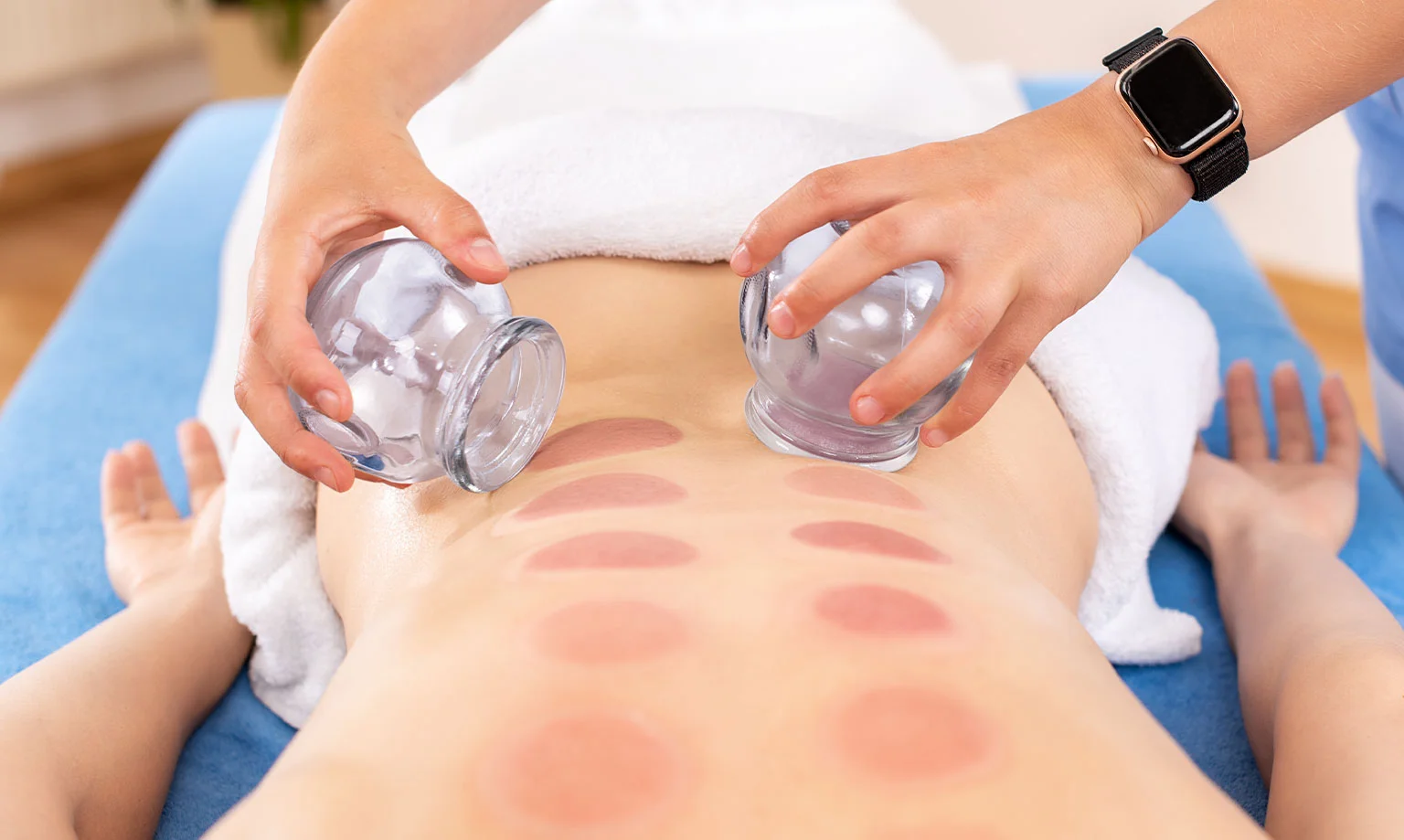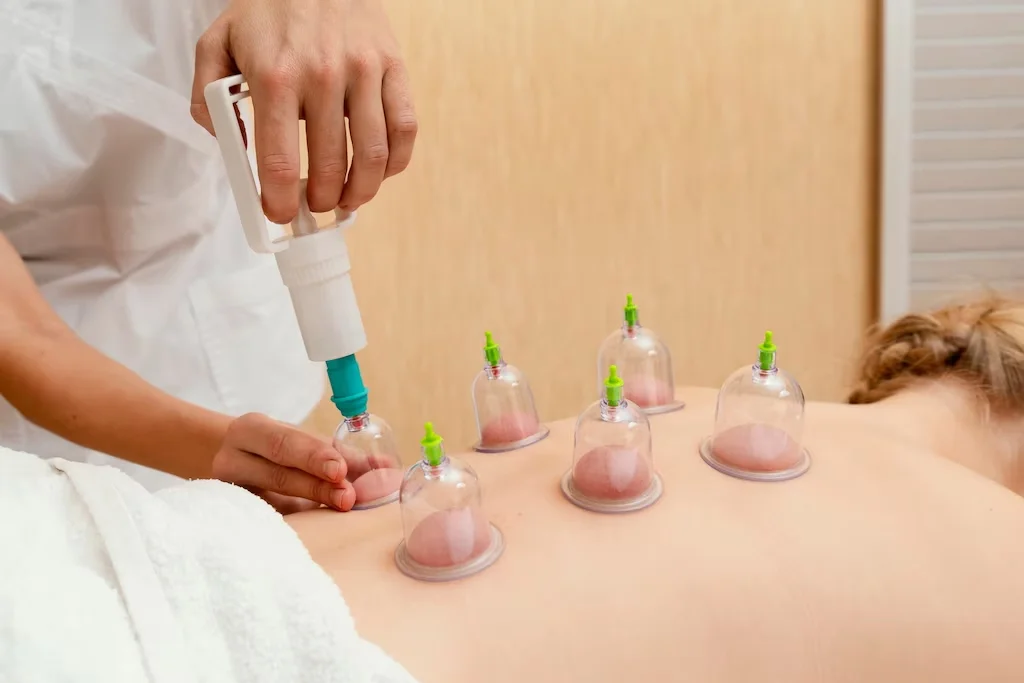Cupping Therapy
Best Cupping Therapy Services in Edmonton
Cupping therapy is an ancient healing technique that originated in China and the Middle East. During a cupping treatment, heated cups are placed on your skin to create a vacuum that pulls your skin upwards. Cupping uses the force of suction to draw blood towards—or away from—specific areas of your body.
When the skin is put under pressure from the suction, tiny blood vessels (capillaries) break open. This triggers your body to deliver new and healthy blood to these areas, which invigorates and heals the area.
Cupping therapy brings with it a raft of benefits, as cups are placed on your stomach, back, arms, and legs to treat different areas. Cupping therapy benefits include:
● Pain relief (in particular the back, neck, knee, shoulder)
● Reduced blood pressure
● Relief from arthritis, headaches, and migraines
● General relaxation and wellbeing
● Increased flexibility

Dry cupping: The practitioner sets alight alcohol-soaked cotton balls to create heat in the cup. The heat forces oxygen out of the cup, creating a vacuum which pulls your skin upwards. Some therapists use suction devices to remove air from the cups.
Running cupping: Similar to dry cupping, except the practitioner applies lotion or oil to your skin before placing the cups. They’ll move the cups across different areas of your body.
Bleeding cupping: Before placing the cups, your therapist makes small incisions in the skin using a sterile needle. This helps remove toxins from the blood.


Cupping therapists may use glass, plastic, bamboo, ceramic, metal, or silicone cups.
After a cupping session, red circular marks will be present on your skin. These can take up to ten days to disappear. The marks are not bruises, although they are similar in appearance.

